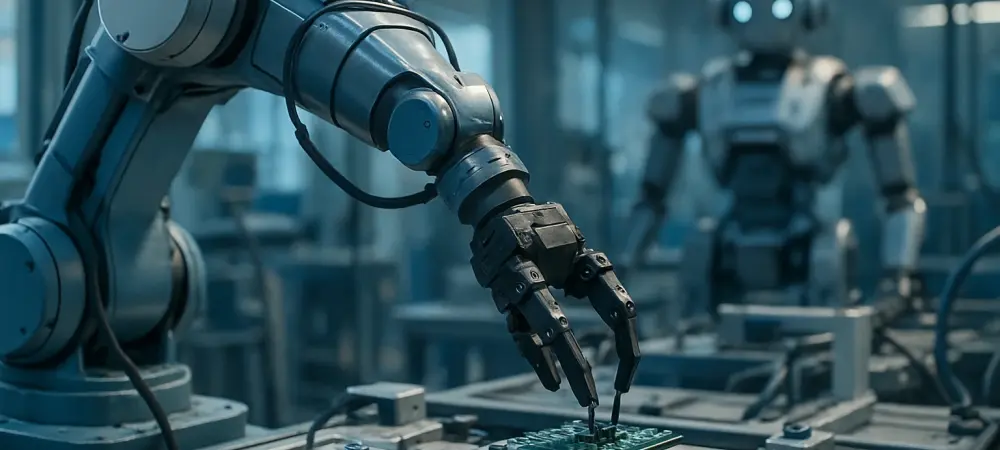Unveiling a Transformative Force in Automation
In an era where technology drives economic progress, robotics and physical artificial intelligence (AI) are emerging as game-changers in the global automation market, with industrial robot installations reaching 542,000 units in 2024 alone, underscoring a seismic shift as machines evolve from mere tools to intelligent systems. These systems are now capable of real-time decision-making and adaptability across diverse sectors. The purpose of this market analysis is to dissect how these advancements are redefining automation, influencing industries like manufacturing, logistics, and healthcare, and setting the stage for unprecedented productivity gains. By examining current trends, data-driven projections, and strategic implications, this exploration aims to provide stakeholders with critical insights into navigating a rapidly evolving landscape. The importance lies in understanding how this convergence of digital intelligence and physical capability is not just a trend but a structural transformation poised to impact global economies and workforce dynamics.
Market Dynamics: Trends, Data, and Projections
Economic Catalysts Driving Adoption
A pivotal force shaping the automation market is the widening gap between escalating labor costs and declining costs of robotic systems. In the United States, hourly manufacturing wages currently stand at significant levels, with projections estimating a rise to $39 by the end of the decade, while industrial robot prices continue to drop due to economies of scale and technological enhancements. This economic disparity, combined with persistent labor shortages and high turnover rates across industries, positions automation as a strategic imperative rather than an option. For instance, sectors like semiconductors and electric vehicles are witnessing accelerated adoption as companies reshore operations to bolster supply chain resilience. However, challenges such as high initial investment costs and the need for workforce retraining pose barriers, particularly for small and medium-sized enterprises. Addressing these hurdles through innovative financing models and government incentives could further catalyze market growth.
Sectoral Expansion and Application Diversity
Beyond traditional industrial strongholds, the automation market is experiencing robust expansion into varied, human-centric domains, reflecting a broader applicability of robotics and physical AI. Logistics giants, with fleets of autonomous mobile robots, are optimizing warehouse efficiency and last-mile delivery, handling tasks from pallet movement to package sorting with precision. In healthcare, surgical robots are enhancing procedural accuracy and minimizing patient recovery times, while retail and hospitality sectors leverage automation for inventory tracking and personalized customer interactions. Emerging applications, such as autonomous robotaxis navigating urban environments, signal a transformative potential for transportation networks. Despite this growth, risks like technical malfunctions and public concerns over safety necessitate stringent regulatory frameworks and robust integration strategies to sustain market confidence and expansion.
Growth in Collaborative and Humanoid Robotics
Adding depth to market dynamics is the rise of collaborative robots, often termed cobots, alongside the nascent but promising segment of humanoid robotics. Cobots, engineered for safe interaction with human workers, are redefining productivity by taking on repetitive or hazardous tasks, thus allowing employees to focus on strategic roles. Humanoid robots, on the other hand, represent a frontier market with projections suggesting annual sales could reach 1 million units by 2030, driven by their potential to operate in domestic and public settings. Market analysts estimate that by the mid-2030s, humanoid adoption could influence one-third of industrial labor roles and contribute to a $5 trillion economic impact. Regional disparities, with Asia accounting for 74% of new industrial robot deployments this year, highlight uneven global growth, while misconceptions about full labor replacement versus augmentation persist. Overcoming these challenges through education and ethical deployment will be key to unlocking segment potential.
Future Outlook: Projections and Emerging Opportunities
Looking toward the horizon, the automation market is set for exponential growth, with global industrial robot installations projected to climb from current levels to over 700,000 units annually by 2028. The maturation of AI-driven software and modular hardware is enabling mass customization, allowing systems to adapt seamlessly across tasks and environments, thus reducing integration costs. Humanoid robots, in particular, are viewed as a solution to chronic labor shortages and aging demographics, with market parallels drawn to the early automobile industry’s transformative arc. Nevertheless, regulatory uncertainties around safety standards and potential economic disruptions from rapid automation adoption loom as significant risks. Emerging opportunities in personal assistance and urban infrastructure management suggest that physical AI could spawn entirely new market categories, positioning it as a long-term driver of economic value and societal change.
Reflecting on Market Insights and Strategic Pathways
Looking back, this analysis illuminated how robotics and physical AI redefined automation, with market data revealing a robust trajectory from 542,000 industrial robot installations in 2024 to projected figures surpassing 700,000 by 2028. The economic imperatives, sectoral diversification, and innovative segments like humanoid robotics underscored a structural shift that reshaped industries and labor dynamics. For businesses, the strategic path forward involves adopting a phased implementation, starting with pilot projects to test system compatibility, while investing in employee upskilling to mitigate transition challenges. Policymakers need to prioritize clear safety regulations and incentives to support smaller enterprises in joining the automation wave. As the market continues to evolve, stakeholders must monitor emerging applications and regional trends to capitalize on untapped opportunities, ensuring that the intelligence age becomes a collaborative triumph of human and machine potential.

